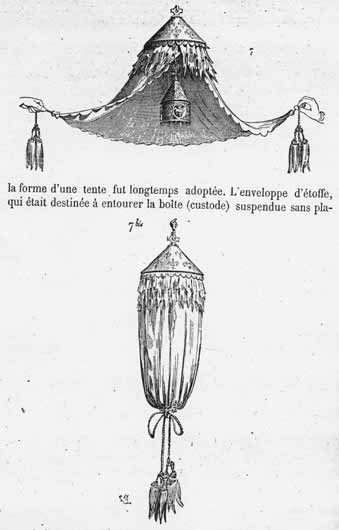
back to "worship"
 |
A small
container for the Eucharist was called a Pyx. It most frequent form
was a circular container with a conical top. These were often made
of bronze gilt with applied enamel decoration, such as those produced in
the city of Limoges for export throughout Europe. The pyx, like the
Eucharistic dove, was often suspended over the altar and surrounded by a
veil. Veils were a constant element of liturgical performance, as in this
illustration. The veil could be opened for veneration and also closed,
increasing the mystery and sense of privileged view surrounding the sacrament.
Margery Kempe describes seasonal liturgies such as Palm Sunday rituals of
the priest lifting up of the veil before a crucifix (ch. 78, 6274-77). (Viollet-le-Duc,
Mobilier 1:252) back to "worship" |